Attracting butterflies to your garden is a worthy goal. After all, butterflies offer a wide variety of benefits to your garden. They are excellent pollinators and help your fruits, vegetables, and flowers reproduce. Bees, wasps, beetles, and moths are also excellent pollinators. Butterflies are a sign of a healthy ecosystem in your garden and an essential member of the food chain. Butterflies are eaten by spiders, lizards, mice, and other creatures.
To be attractive to butterflies, plants need to contain sweet nectar to provide food for butterflies. Remember the number one rule for a butterfly-filled garden; no pesticides! Plant your butterfly-attracting plants in a sunny and wind-free area for a nice warm place for your winged friends to land. Here are 16 plants that can help attract butterflies to your garden.
With each plant, you will be given the numbers of the hardiness zones in which the plant can succeed. Hardiness zones are a standard for gardeners based on average annual minimum temperatures. Checking the zone will tell you which plants are most likely to thrive in your location.
1. Butterfly Bush (Buddleja davidii)
We will start with the obvious choice, a butterfly bush. Butterfly bushes grow quickly and bloom in purple, pink, red, white, and yellow. They flower from summer through fall and are full of delicious nectar to attract butterflies. Butterfly bushes are hardy from Zones 5 – 9. They will die down to the ground in colder climates and come back in the spring.
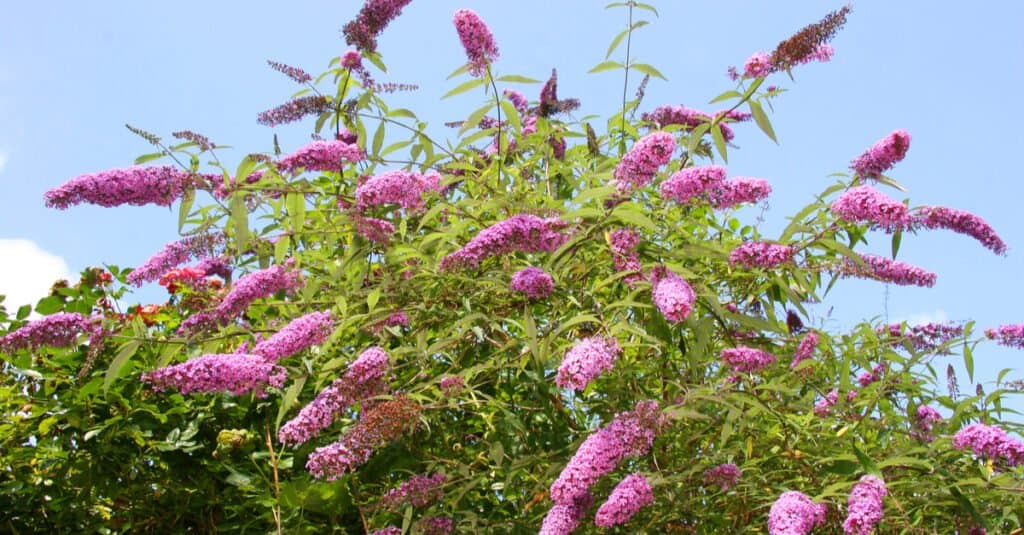
Butterfly bushes grow quickly and bloom in purple, pink, red, white, and yellow.
©Dirk M. de Boer/Shutterstock.com
2. Milkweed (Asclepias incarnata)
Milkweed is an unlikely candidate, but believe it or not, it is the primary food source for many butterflies and insects and a favorite place for monarchs to lay their eggs. Swamp milkweed has highly aromatic flowers that will make your yard smell lovely. The blooms arrive in early summer and are pink or purple. Milkweed is a hardy perennial from Zones 3 – 8 and likes moist (swampy) soil.
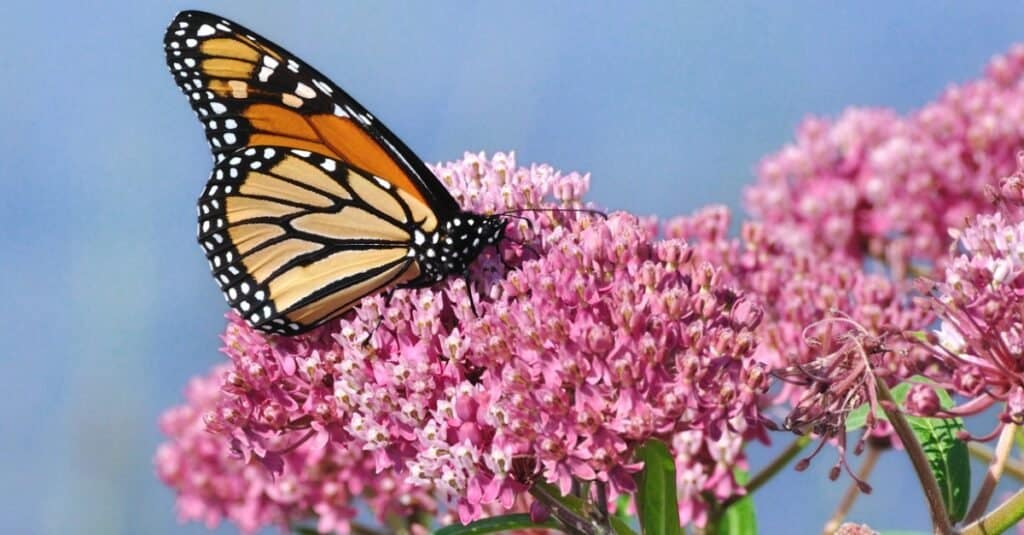
Milkweed is the primary food source for many butterflies.
©iStock.com/herreid
3. Lavender (Lavendula)
Lavender is loved by butterflies and humans alike. It has a wonderful nectar that tastes good to several butterflies, including Horace’s dusky wing and western tiger swallowtail. The purple flowers of lavender arrive in summer and last until fall. Lavender thrives in hot, arid climates and is hardy from Zones 5 – 9. Be sure to plant it in a well-draining area, as lavender cannot withstand soggy roots.

Lavender has a nectar that tastes good to several types of butterflies.
©iStock.com/igoriss
4. Heliotropes (Heliotropium arborescens)
Heliotropes are members of the borage family and grow nearly four feet tall. They are bushy evergreen shrubs covered in bright purple flowers. Heliotropes have an intense vanilla fragrance and are the favorite food for several types of butterflies, including red admirals and small tortoiseshell. Heliotropes are not cold-hardy and are usually grown as annuals unless you are in Zones 10 or above.
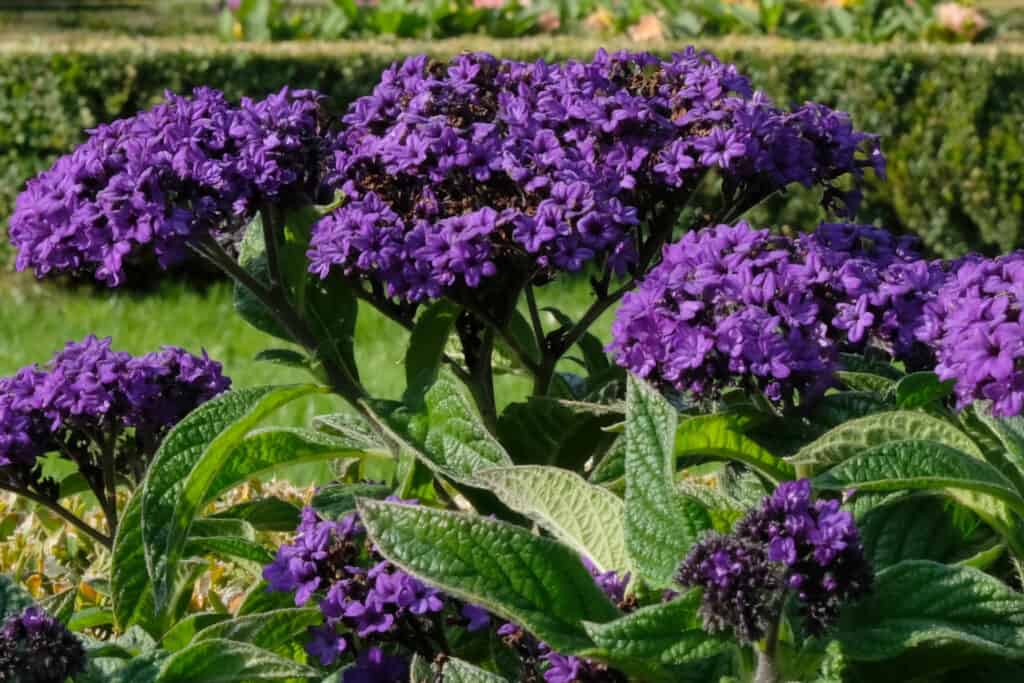
Heliotropes have an intense vanilla fragrance and are the favorite food for several types of butterflies.
©iwciagr/Shutterstock.com
5. Oregano (Origanum vulgare)
Oregano is an herb that belongs to the mint family. It is native to the Mediterranean and loves a hot, dry climate and lots of sunshine. Oregano flowers pop in summer and are many shades of purple. The strong herby fragrance is loved by butterflies, especially swallowtails (both caterpillars and adults). Attracting caterpillars is a fun option if you have children that would like to see the whole life cycle; a caterpillar emerging from its chrysalis as a butterfly! Oregano is hardy from zones 5 through 10 and easy to grow.
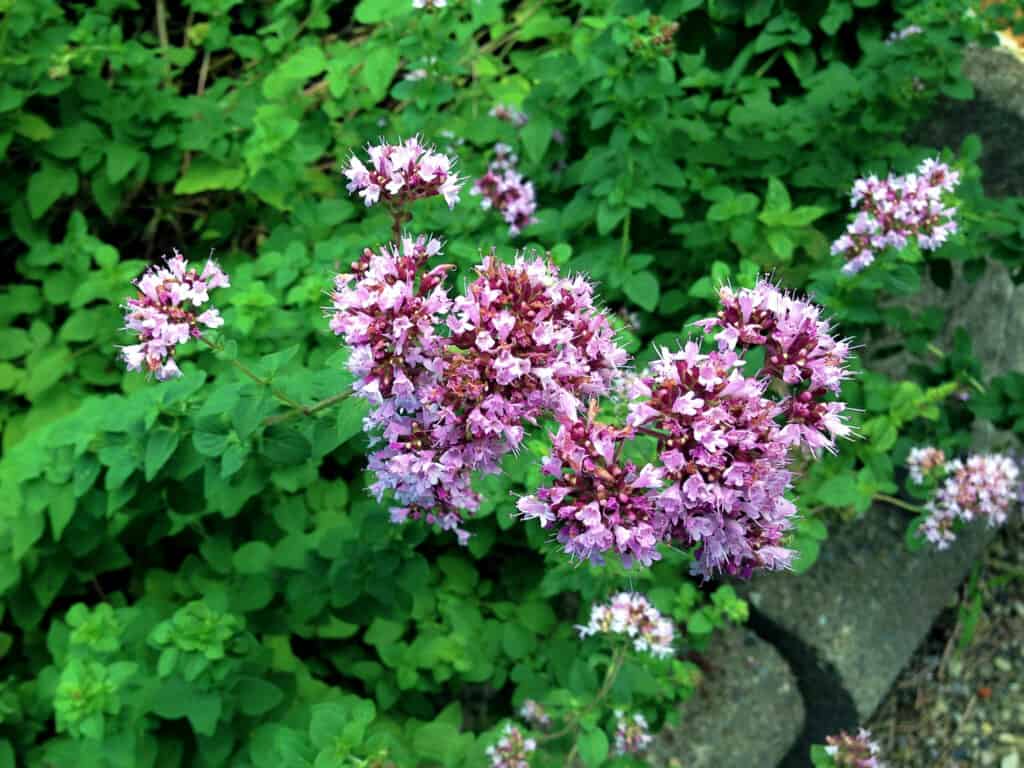
The strong herby fragrance of oregano is loved by butterflies.
©Kei Tsuzurahara/Shutterstock.com
6. Pot Marigolds (Calendula officinalis)
Calendula has a lot going for it; it is easy to grow, survives in the shade, tolerates any soil, self-seeds, blooms quickly, and is inexpensive. And, of course, pot marigolds are attractive to pollinators! Pot marigolds bloom in the summer with lovely yellow and orange flowers, which are butterflies’ favorite food. The flowers are edible to humans too, and you can add them to salads. Calendula is not cold hardy and is grown as an annual in Zones below 9.

Pot marigolds (
Calendula) bloom in the summer with lovely yellow and orange flowers.
©Yulia_B/Shutterstock.com
7. Bee Balm (Monarda)
Bee balm is another mint family member and a vigorous grower. The fragrant leaves and blooms attract many pollinating birds and insects, including butterflies. Bee balm thrives in sun and moist, well-drained soil and will spread prolifically by underground rhizomes. The plant produces flowers that remain in bloom almost the entire year, dying only in the coldest winter months. Bee balm is hardy from Zones 3 – 9.
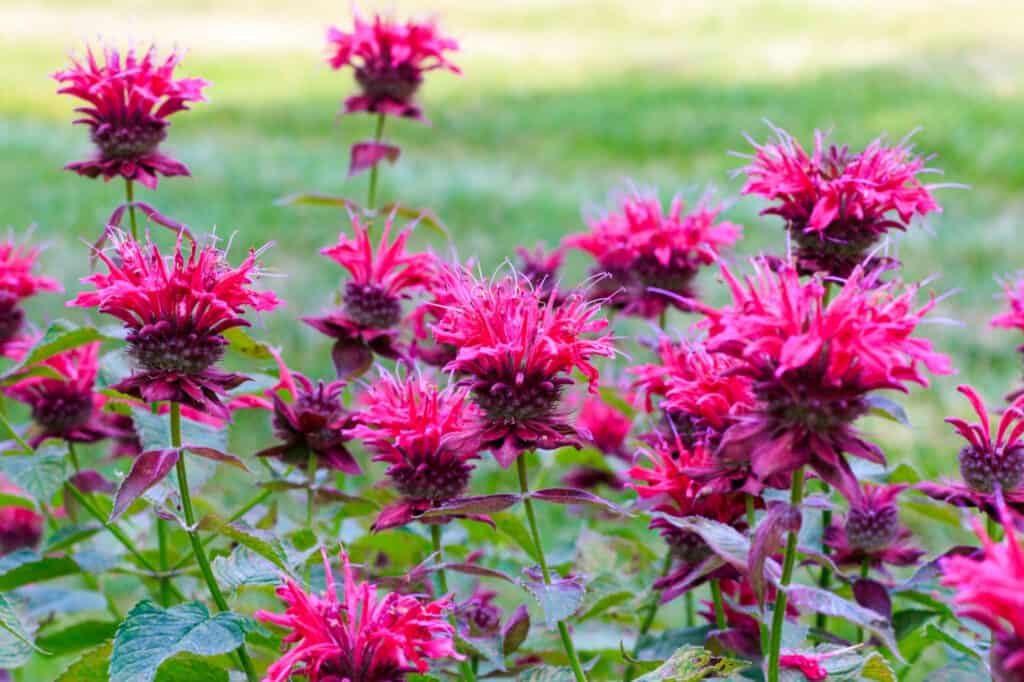
Bee balm produces flowers that remain in bloom almost the entire year.
©Bryan Pollard/Shutterstock.com
8. Black-Eyed Susan (Rudbeckia hirta)
Black-eyed Susans are a member of the aster family and have beautiful bright yellow daisy-like flowers. They are laden with pollen and nectar and a favorite treat for many butterflies, including Gorgone checkerspot and bordered patch (both caterpillar and adult). Black-eyed Susan is an easy-to-grow, sun-loving perennial, and popular bedding plant. It is hardy from Zones 3 – 10 and is the state flower of Maryland. Black-eyed Susans make excellent cut flowers and last up to ten days in a vase.
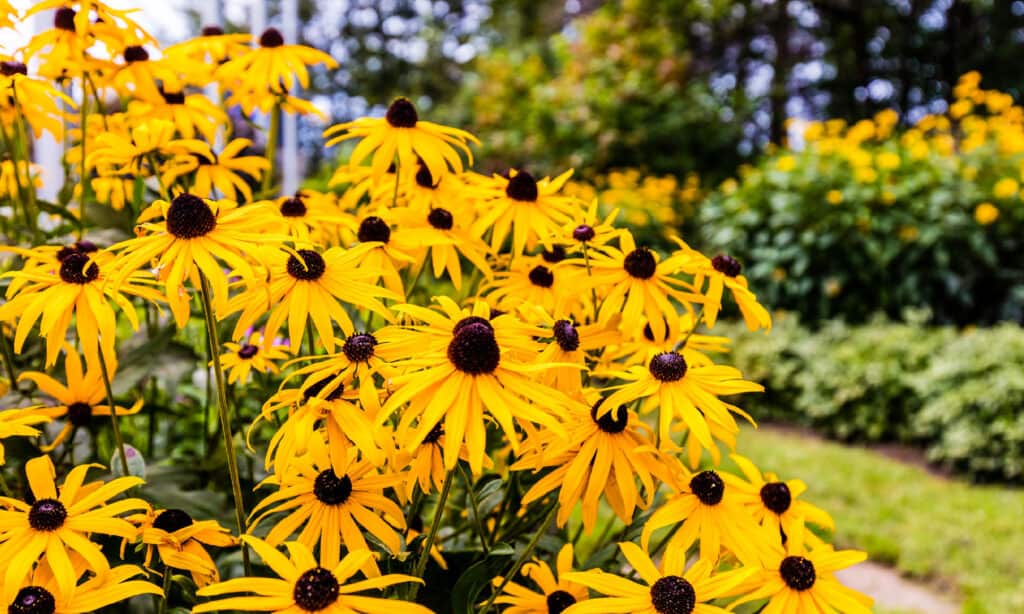
Black-eyed Susan is laden with pollen and nectar, a favorite treat for many butterflies.
©iStock.com/Dopeyden
9. Sage (Salvia officinalis)
Salvia is a large family of plants and includes shrubs, annuals, and perennials. The great news; they are all attractive to butterflies. Common sage is a perennial woody evergreen shrub with grayish leaves and purple flowers. It has a lovely, sweet scent that many butterflies adore, including swallowtails, skippers, monarchs, gulf fritillaries, and mourning cloaks. Sage is hardy from Zones 5 – 8 and prefers full sun and well-drained soil.
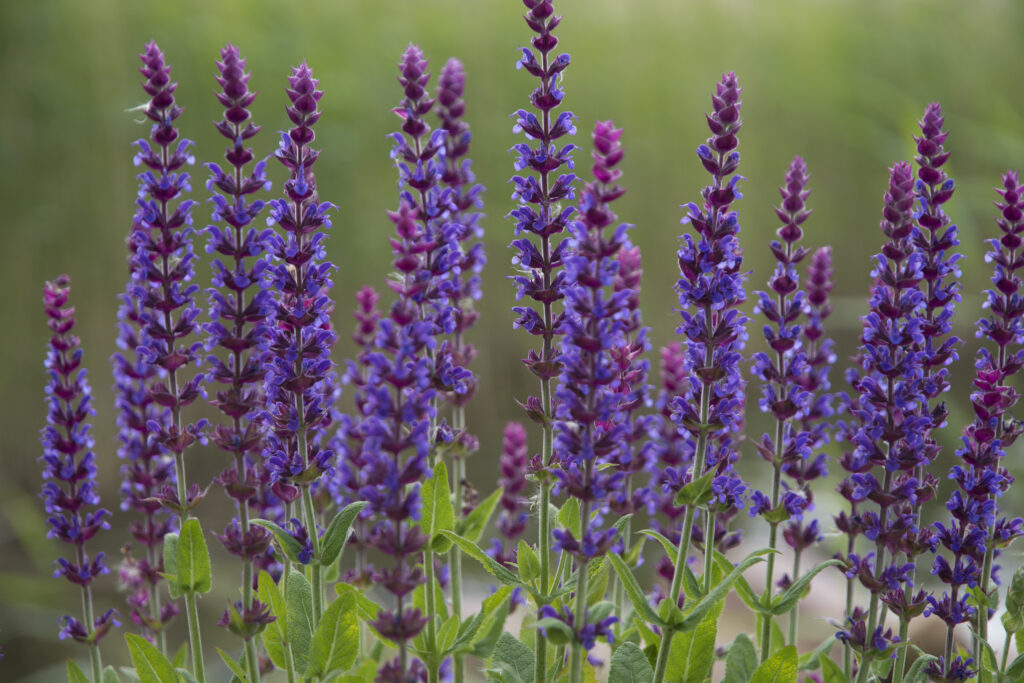
is a large family of plants that are all attractive to butterflies.
©Artesia Wells/Shutterstock.com
10. Phlox (Phlox paniculata)
Phlox is a big family with nearly 70 species of perennial and annual plants. They are primarily native to North America and thrive in a wide range of habitats. They have a range of flowering seasons as well, with some Phlox flowering in the spring, summer, and fall. Phlox comes in pink, purple, red, white, and blue. Most of them are fragrant and attractive to many types of butterflies and other pollinators. Phlox is hardy from Zones 3 – 8 and prefers full sun.
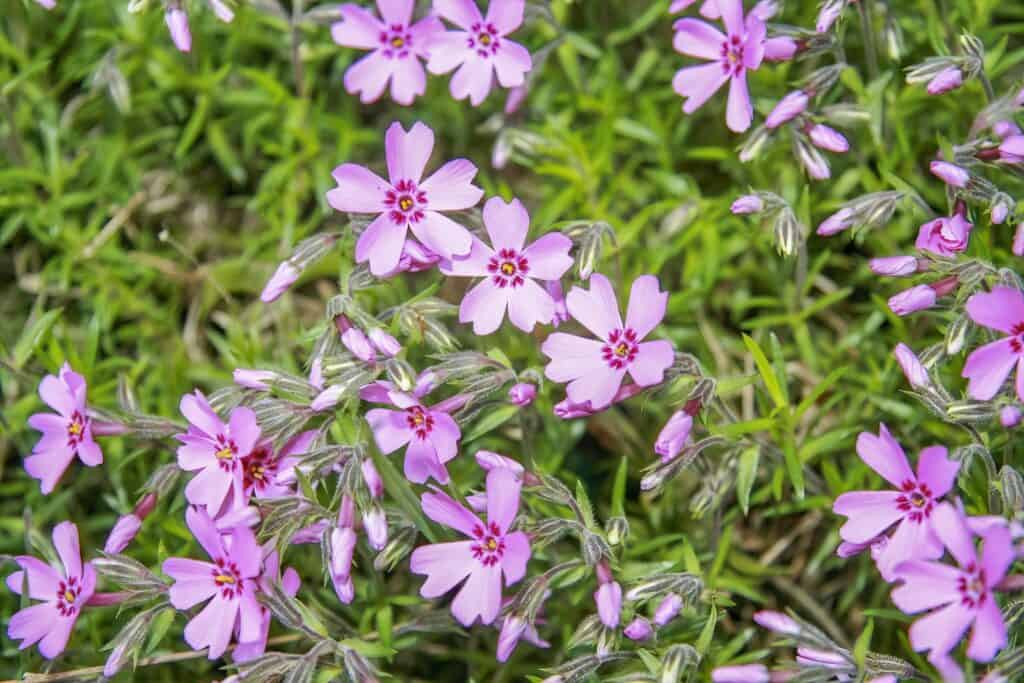
comes in pink, purple, red, white, and blue with most being fragrant and attractive to many types of butterflies and other pollinators.
©Wirestock Creators/Shutterstock.com
11. Daylily (Hemerocallis)
Daylilies are not true lilies but tuberous perennials that are pretty hardy. It has often been called “the perfect perennial” by gardeners because of its versatility, bright colors, and ability to withstand almost any climate, light, or soil condition. These low-maintenance plants are favorites of butterflies, especially the red and orange varieties. Daylilies are hardy through Zones 4 – 11, and some cultivars can be grown as low as Zone 2.
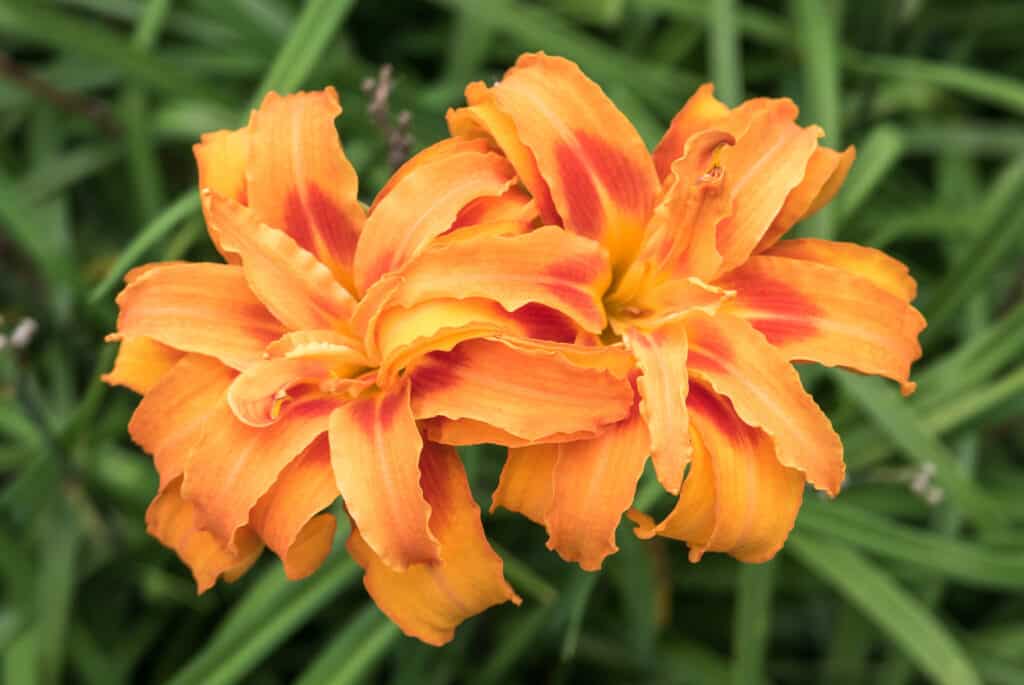
Daylilies are low-maintenance plants that are favorites of butterflies, especially the red and orange varieties.
©iStock.com/lrosebrugh
12. Hollyhocks (Alcea)
Hollyhocks are flowering plants in the mallow family. They are annual or perennial plants that form deeply cupped flowers full of nectar. They come in blue, pink, purple, red, white, and yellow. Some cultivars of hollyhock will grow up to eight feet tall and most readily self-seed. Hollyhock nectar attracts adult butterflies and caterpillars so that you can witness the entire life cycle of the insect in your garden. Hollyhocks are hardy from Zones 3 – 8 and prefer full sunshine.
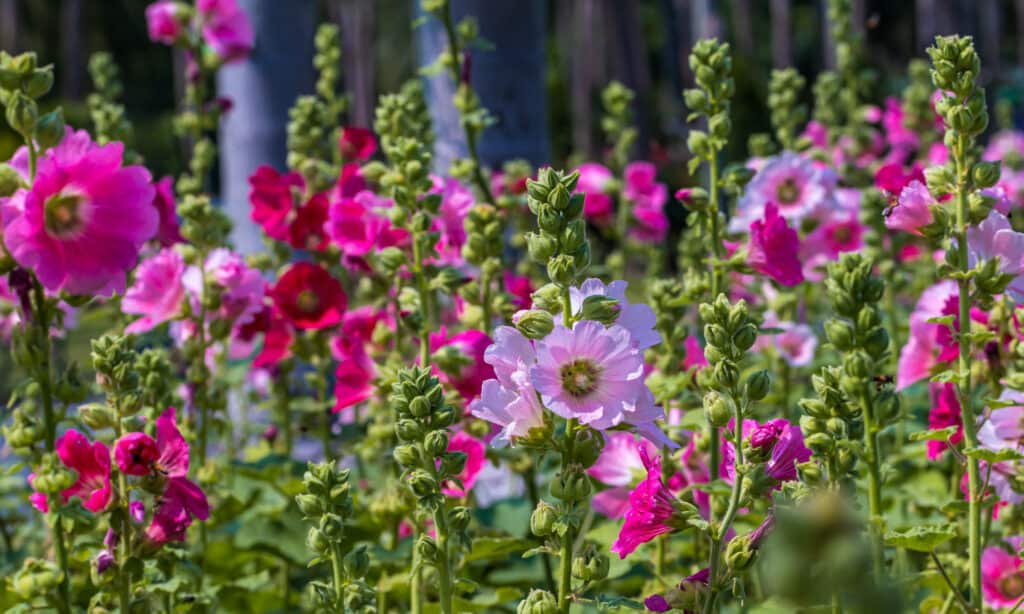
Hollyhock nectar attracts adult butterflies and caterpillars.
©Alohapatty/Shutterstock.com
13. Coneflower (Echinacea)
Coneflowers are members of the daisy family and come in various colors, including red, purple, yellow, and white. Coneflowers provide a nice solid surface for butterflies to land on and delicious nectar for them to enjoy. The blooms arrive in summer and last until frost. Coneflowers attract many butterflies, including swallowtails, monarchs, fritillaries, and painted ladies. Coneflowers are hardy between Zones 5 – 8, with a few cultivars thriving as low as Zone 3. Plant your coneflowers in full sun with good drainage and excellent air circulation.
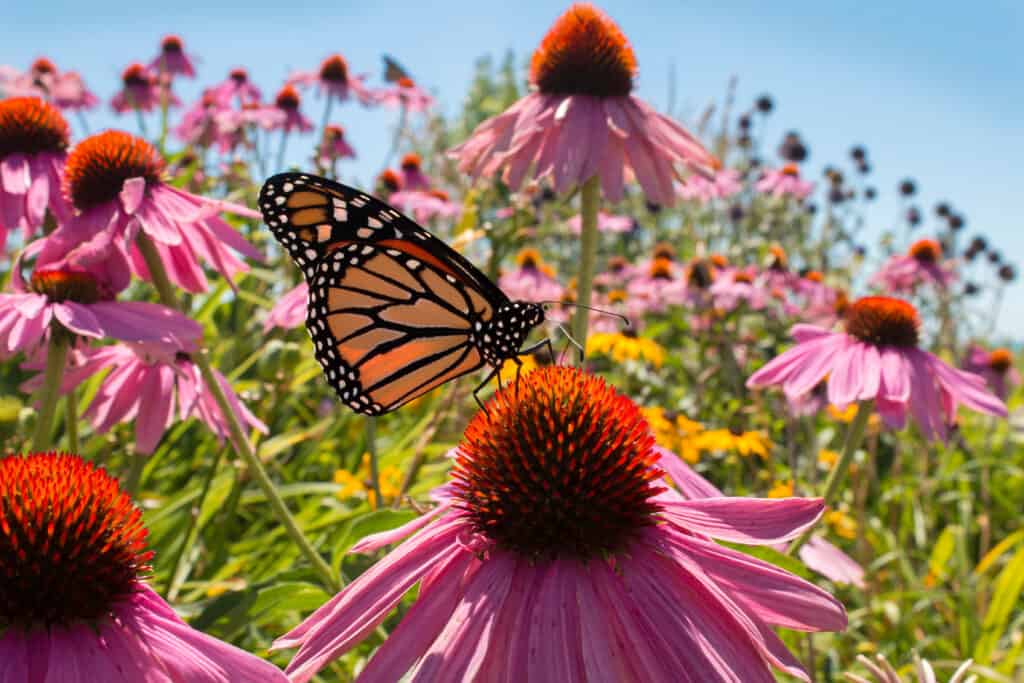
Coneflowers provide a nice solid surface for butterflies to land on and delicious nectar for them to enjoy.
©Media Marketing/Shutterstock.com
14. Joe-Pye Weed (Eutrochium)
Joe-Pye weed is native to the United States and Canada. Joe-Pye weed grows between six and eight feet tall and three feet wide, making a stunning display of purple flowers all summer. The rounded clusters of flowers are arranged in whorls around the stem and provide a sweet vanilla scent that attracts many butterflies. Joe-Pye weed is hardy from Zones 4 – 8; they will die down to the ground in colder climates and come back in the spring.
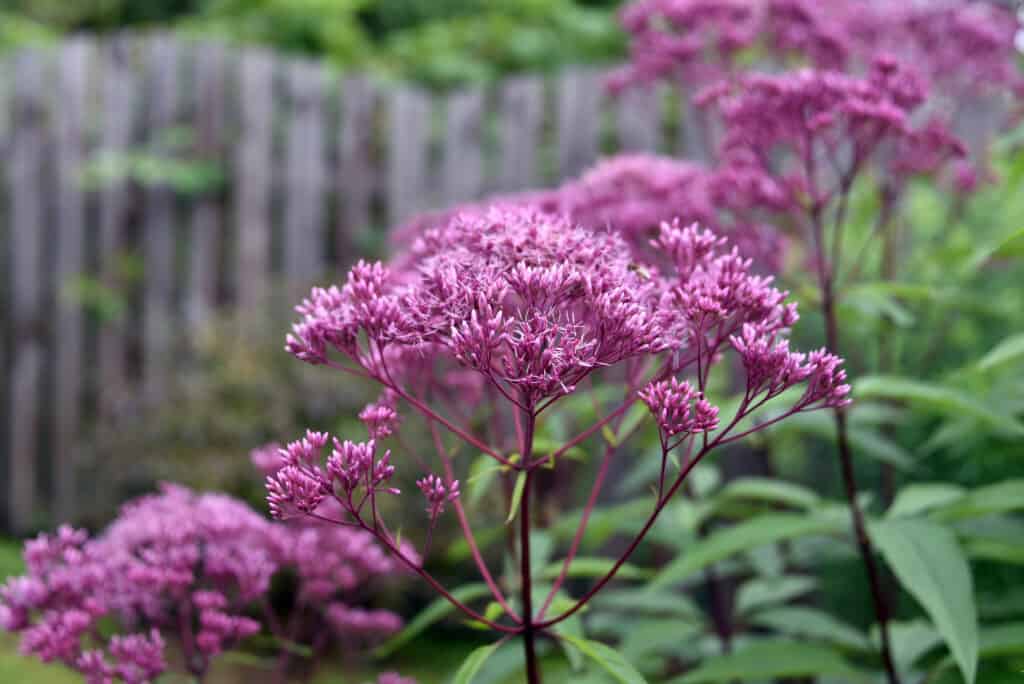
Joe-Pye weed flowers are arranged in whorls around the stem and provide a sweet vanilla scent that attracts many butterflies.
©Andrey_Nikitin/Shutterstock.com
15. Sedum (Crassulaceae)
Sedum is a big family of plants containing over 600 species. They are primarily plants with water-storing leaves that thrive in hot, dry conditions. Most sedums have pink, yellow, or purple flowers and are winter hardy from Zones 3 – 11. Plant them in sandy soil that has excellent drainage and receives at least eight hours of sun per day. Many butterflies love sedum flowers, including silver-spotted skippers, monarchs, painted ladies, and gray hairstreaks.
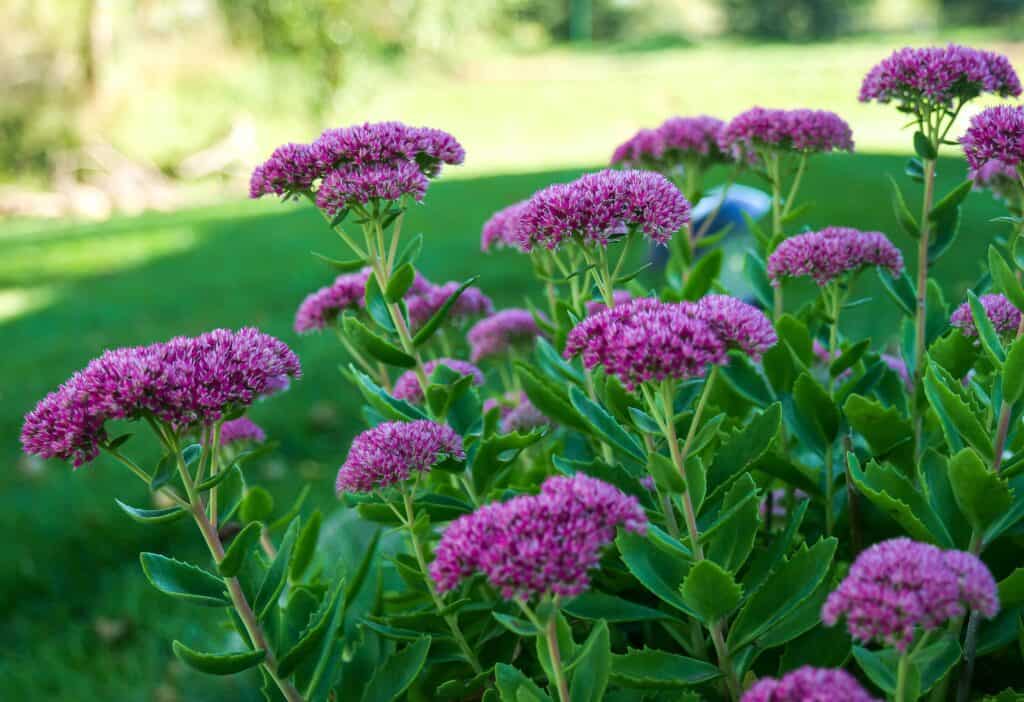
Sedum is a big family of plants containing over 600 species most with pink, yellow, or purple flowers.
©Edgar Lee Espe/Shutterstock.com
16. Goldenrod (Solidago)
Goldenrod refers to many species of plants in the sunflower family. They are herbaceous perennial plants with bright yellow flowers. They thrive in open areas like prairies and meadows, and you can often find them growing in large numbers on the side of the freeway. Goldenrod spreads by underground rhizomes and can reach two to five feet tall. The puffy daisy-like flowers are a favorite of butterflies and provide much-needed food in the fall when there isn’t much for them to eat. Goldenrod is hardy between Zones 2 – 8 and requires full sun to thrive.

Goldenrod flowers are a favorite of butterflies providing them with food in the fall when there isn’t much for them to eat.
©iStock.com/aga7ta
Summary of the Plants that Attract Butterflies
| Name of Plant | Hardiness Zone | |
|---|---|---|
| 1. | Butterfly Bush | 5-9 |
| 2. | Milkweed | 3-8 |
| 3. | Lavender | 5-9 |
| 4. | Heliotrope | 10+ |
| 5. | Oregano | 5-10 |
| 6. | Pot Marigold | below 9 |
| 7. | Bee Balm | 3-9 |
| 8. | Black-Eyed Susan | 3-10 |
| 9. | Sage | 5-8 |
| 10. | Phlox | 3-8 |
| 11. | Daylily | 4-11 |
| 12. | Hollyhock | 3-8 |
| 13. | Coneflower | 5-8 |
| 14. | Joe-Pye Weed | 4-8 |
| 15. | Sedum | 3-11 |
| 16. | Goldenrod | 2-8 |
The photo featured at the top of this post is © iStock.com/lantapix
Sources
- SpringerLink, Available here: https://link.springer.com/article/10.1007/s10841-015-9827-9
- Native Plants Journal, Available here: https://npj.uwpress.org/content/15/1/5.short
Thank you for reading! Have some feedback for us? Contact the AZ Animals editorial team.






